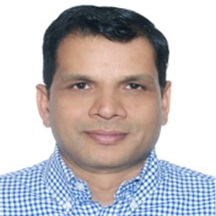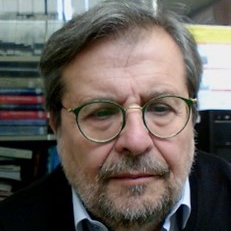Hydrodynamic Response to the Effect of Current Loads on Floating Offshore Platform
A special issue of Journal of Marine Science and Engineering (ISSN 2077-1312). This special issue belongs to the section "Ocean Engineering".
Deadline for manuscript submissions: 31 May 2024 | Viewed by 820
Special Issue Editors
Interests: hydroelasticity; marine dynamics and hydrodynamics; wave–current interaction; offshore floating and submerged flexible structures
Special Issues, Collections and Topics in MDPI journals
Interests: ship and marine hydrodynamics; wave-body–seabed interactions; wave–current interaction; propagation in inhomogeneous environment; wave climate and potential; marine renewable energy systems
Special Issues, Collections and Topics in MDPI journals
Special Issue Information
Dear Colleagues,
This Special Issue is driven by the increasing interest in the dynamics of floating offshore platforms under current loads as floating offshore platforms are located in unprotected environmental conditions and depths in offshore regions. Therefore, the dynamic responses of floating offshore platforms under current loads in terms of structural motions and displacements of different modes are necessary to access their efficiency, survivability, stability from structural damage.
This Special Issue will focus especially on models based on the novel, latest, and allied developments under current loads with floating offshore platforms. Submissions must include theoretical modeling, numerical modeling, and prototype testing as applications in offshore platforms.
Contributions introducing the wave–current interactions on the dynamics of the floating rigid/flexible platforms based on theoretical, numerical, and experimental models are specially encouraged and welcomed. All types of manuscripts (i.e., research articles, reviews, and short communications) are welcomed.
Dr. Sarat Chandra Mohapatra
Prof. Dr. Kostas Belibassakis
Guest Editors
Manuscript Submission Information
Manuscripts should be submitted online at www.mdpi.com by registering and logging in to this website. Once you are registered, click here to go to the submission form. Manuscripts can be submitted until the deadline. All submissions that pass pre-check are peer-reviewed. Accepted papers will be published continuously in the journal (as soon as accepted) and will be listed together on the special issue website. Research articles, review articles as well as short communications are invited. For planned papers, a title and short abstract (about 100 words) can be sent to the Editorial Office for announcement on this website.
Submitted manuscripts should not have been published previously, nor be under consideration for publication elsewhere (except conference proceedings papers). All manuscripts are thoroughly refereed through a single-blind peer-review process. A guide for authors and other relevant information for submission of manuscripts is available on the Instructions for Authors page. Journal of Marine Science and Engineering is an international peer-reviewed open access monthly journal published by MDPI.
Please visit the Instructions for Authors page before submitting a manuscript. The Article Processing Charge (APC) for publication in this open access journal is 2600 CHF (Swiss Francs). Submitted papers should be well formatted and use good English. Authors may use MDPI's English editing service prior to publication or during author revisions.
Keywords
- theoretical model for floating offshore platforms
- interconnected floating platforms under current loads
- hydroelastic response of floating offshore platforms
- experiments on floating platforms
- dynamics of moored platforms
- interconnected circular floating platforms
- offshore wind turbine platforms
- offshore aquaculture bases
- effect of seabed topography






